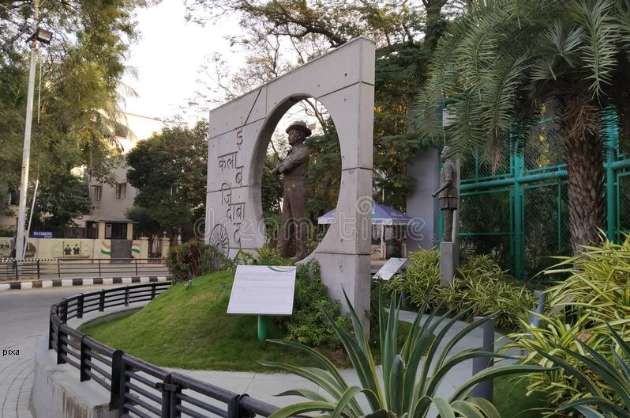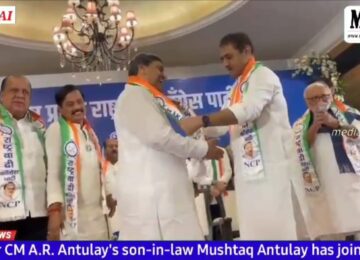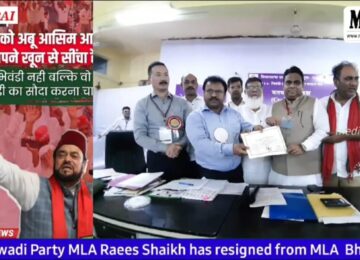Anupama Nair
www.mediaeyenews.com
Our great Prime Minister Modi inaugurated the Amrit Mahotsav or celebration of India’s 75th year of Independence. We will be celebrating this event till 2022. I am going to write a feature on all those great men and women who fought against foreign invasion not just against the British. I had written many articles on unknown people who gave their lives for freedom of Bharat Ma.
What is freedom and are we totally free as was the dream of many who gave their lives for the independence of India. Rabindra Nath Tagore in Gitanjali said
“Where the mind is without fear and the head is held high;
Where knowledge is free;
Where the world has not been broken up into fragments by narrow domestic walls;
Where words come out from the depth of truth;
Where tireless striving stretches its arms towards perfection;
Where the clear stream of reason has not lost its way into the dreary desert sand of dead habit;
Where the mind is led forward by thee into ever-widening thought and action –
Into that heaven of freedom, my Father, let my country awake”.
When you read this poem and ask your conscience and think of the question and you will get the answer. Did the sacrifice of the millions go in vain? Have we have forgotten them and only give credit to two for our independence and the rest are forgotten in the annals of history never to be remembered. Was it for this day, they selflessly sacrificed their life for you and me, children of Independent India? However, is it fair to forget them and their sacrifice?
Today I am going to write about Kartar Singh, a 19-year-old revolutionary who gave his life for his motherland. “Among the more inspiring tales of the Indian Freedom Movement are the stories of the young men and women who flirted with danger by taking on the might of ‘the great empire, where the sun never sets’. and sacrificed their lives for their motherland. Every year on 23rd March or Shaheed Diwas, Bhagat Singh and his comrades, Sukhdev and Rajguru, are remembered for the sacrifice they made. For a country that was enslaved by the British, the execution of these three young men in 1931 served as a fuel to further their commitment or freedom”. It is said, “their executions were not an end, but yet another beginning and perhaps more importantly, a reaffirmation of their dream to achieve their goal of free India.
In 1915, when Bhagat Singh was only a young boy, another young man was executed by the British Administration. He was only 19 and his sacrifice served as a ‘trigger of sorts to many others’. Kartar Singh Sarabha was born on 24th May 1896 in Sarabha village near Ludhiana in undivided Punjab. Since the middle of the 19th Century, Punjab had undergone many unfavorable changes. In the year 1849, the British had usurped the empire of the great Maharaja Ranjit Singh after pensioning off his heir, Dalip Singh. Soon after, many Punjabis joined the British-Indian Army. By 1900 close to half of the Indian Army comprised troops from Punjab.
The ‘Canal Colonies’ were developed in Punjab by the British to feed their commercial agricultural activities and had also resulted in internal migration between East and West Punjab. The colonies had enabled many peasants to obtain land, but the cycle of bad harvests, indebtedness and pressure to pay tax were their major worries. The famines of 1896-97 and 1899-1900 were particularly severe. In November 1906, a drastic increase in the rate of canal water was announced by the Colonial Government.
In such a worrisome situation, the urge to leave Punjab to other countries was but quite natural. Initial emigration was to the Far East, however, in 1905, 45 Punjabis went to Canada and by 1908, there were 3500 Indians in Canada when the authorities clamped down on Indian immigration. Then they now entered the United States. Several thousand managed to enter the US, and most of them were Sikhs.
Sarabha’s early years were spent in the village where he was brought up by his grandfather following his father’s early death. He completed his matriculation from Ravenshaw College in Cuttack, where an uncle lived. In the year, 1912, Sarabha left for San Francisco, wanting to enroll at the University of Berkeley. However, his enrollment details at Berkeley are unclear and it is difficult to state with certainty that he did study there.
North America in the beginning of 20th century were hostile to Asian immigrants and their presence caused much resentment. The immigrants began form groups in an attempt to share their troubles and discuss what they were experiencing. In this process, Sarabha became politicized. Freeing India from the British was thought to be a way to restore the honor and dignity of Indians. In March 1913, Indian workers in the states of Oregon and Washington founded an organization to fight for their rights. Around the same time, in May-June 1913, Lala Hardayal addressed a series of meetings in California and formed a party called Ghadar Party with a call for armed revolution. Sarabha joined the movement and soon the party began to spread its wings across the US. The movement set up its headquarters in San Francisco and besides Sarabha, many others like Harnam Singh, Raghubar Dyal Gupta and many others volunteered not only to work for the movement, but to stay in the premises and be available for it at all times.
Soon a newspaper called Ghadar was published in Urdu in November 1913 and from December onwards in Punjabi. It was still not clear how the Ghadarites intended to start an armed rebellion. Being politically well-informed, there was a sense that Europe would soon be plunged in war and that would be perhaps be a good moment to strike. The feeling though was that this war would likely begin around 1920 and so they had some years to prepare themselves. Meanwhile, regular issues of the publication kept coming out, some even finding their way to India where they were seized by British authorities.
“Almost from the very beginning, things did not go according to plan. Many who landed in Calcutta, like Sohan Singh Bhakna, were arrested on arrival. Sarabha, who was handicapped by the arrest of his compatriots, nevertheless continued undaunted and entered many cantonments in Punjab and attempted to radicalize the soldiers. Vishnu Ganesh Pingley, his associate from the US and Rash Behari Bose from Bengal who had joined the Ghadarites in India were his companions in this endeavor.
The date for armed revolt was fixed on 21st February 1915, unfortunately, someone leaked this information to the British authorities after which the date was changed to 19th February. Meanwhile, the British reacted swiftly and arrested a number of revolutionaries. The promised revolution did not occur. Both Pingley and Sarabha were arrested. Bose fled to Japan and did not return to India till his death there in 1945.
Pingle, Sarabha, Harnam Singh, Bhai Paramanand and many others were tried in the Lahore Conspiracy trial in April 1915 for their roles in the February plot. When questioned about his role in the plot, Sarabha was defiant, stating that “it was his duty to get Indians to rebel against the British”. Pingle and Sarabha were executed at the Lahore Central Jail on 16th November 1915.
Sarabha’s supreme sacrifice did not go in vain. Bhagat Singh idolized him and carried his photo around in his pocket at all times. When the ‘Naujawan Bharat Sabha’ was established in March 1926 by Bhagat Singh, Bhagwati Charan Vohra and others, one of the first functions that the Sabha organized was to pay homage to Sarabha. In that function, Durga Devi and Sushila Devi sprinkled blood from their fingers on a milky white cover of Sarabha’s portrait to underline their commitment to the cause.
Let me ask you a question, how many of you have heard of him? I am sure the answer would be very few. I wrote this article to pay homage to this patriot who we can call as Bhagat Singh’s guru.




























